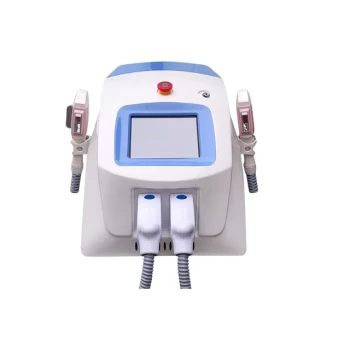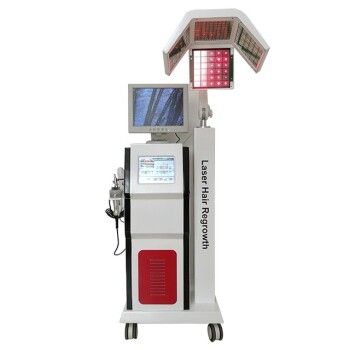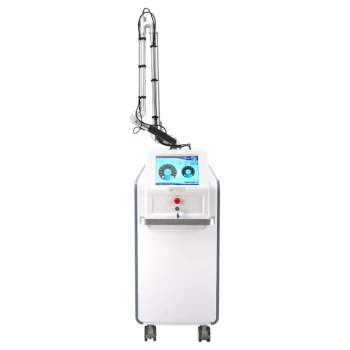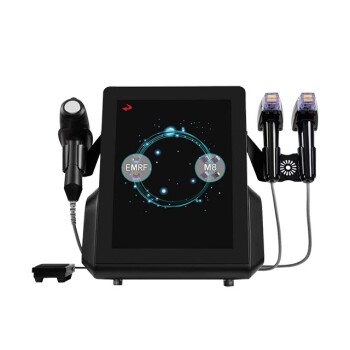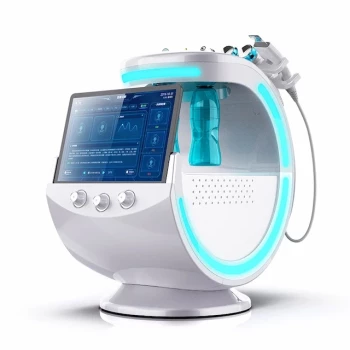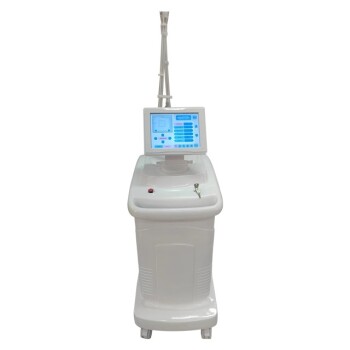Yes, SHR technology works. Super Hair Removal (SHR) is a modern evolution of light-based hair removal that is considered highly effective, with clinical studies and user reports confirming its ability to achieve significant permanent hair reduction. It represents a major advancement over older Intense Pulsed Light (IPL) systems in both effectiveness and safety.
The key to SHR's success is not raw power, but its intelligent delivery. By using low-energy pulses at a high frequency, it gradually heats the hair follicle to disable it, making the process safer, more comfortable, and more effective than the high-energy "stamping" method of traditional IPL.
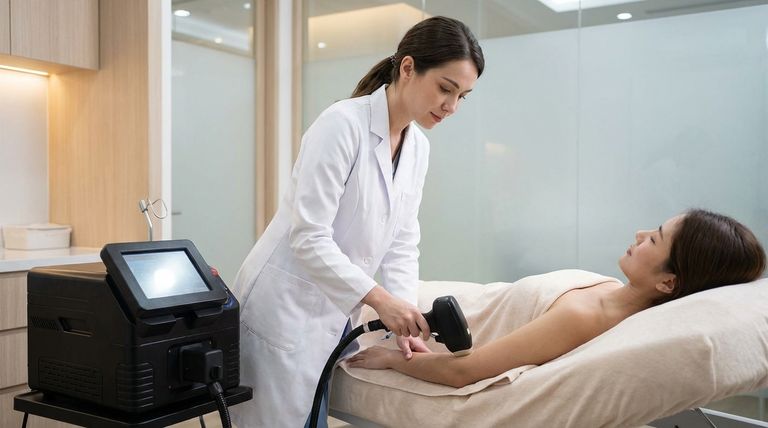
How SHR Revolutionizes Hair Removal
To understand if SHR is right for you, it's crucial to grasp how it differs from previous technologies. Its effectiveness is rooted in a fundamentally different approach to disabling hair growth.
The "In-Motion" Technique
SHR’s defining feature is its "in-motion" delivery. Instead of pressing the device onto one spot and delivering a single, intense blast of light, the technician glides the handpiece continuously over the treatment area.
This allows for a more uniform and comprehensive coverage, ensuring every follicle receives the necessary energy.
Gradual Heating vs. High-Energy Blasts
Traditional IPL systems use a single, high-intensity pulse to superheat the melanin in the hair, which then damages the follicle. This can be painful and carries a higher risk of burns, especially for darker skin tones.
SHR, by contrast, uses lower energy with a high repetition rate. It gently and gradually raises the temperature of the follicle and surrounding stem cells to a point where they are thermally damaged and can no longer produce hair.
Targeting the Structures for Regrowth
The gradual heating process is more effective because it doesn't just target the melanin in the hair shaft. It also disables the stem cells located in the bulb and bulge of the follicle, which are responsible for hair regeneration.
By destroying these key structures, SHR provides a more complete and permanent form of hair reduction.
SHR vs. Traditional IPL: A Clear Comparison
When evaluating SHR, the most common comparison is with traditional IPL. Here is how they stack up in the areas that matter most.
Effectiveness and Permanence
SHR is widely reported to be more effective. The reference data suggests an effectiveness rate of approximately 90% for permanent hair reduction with SHR, a significant improvement over IPL's typical 70% rate.
Safety and Skin Types
SHR is demonstrably safer. Its use of lower energy levels dramatically reduces the risk of burns, irritation, and hyperpigmentation.
Because it relies less on high melanin absorption, SHR is also considered safer for a broader range of skin tones, including tanned and darker skin, which are often not suitable candidates for traditional IPL.
Comfort and Pain Level
The patient experience is vastly different. The single, intense pulse of IPL is often described as a "rubber band snap." SHR's gradual heating process is frequently compared to a warm hot stone massage, making it a far more comfortable treatment.
Understanding the Trade-offs and Realities
While highly effective, it's important to have realistic expectations. No technology is magic, and understanding the process is key to a successful outcome.
"Permanent Reduction," Not "Permanent Removal"
The industry standard term is "permanent hair reduction," not total removal. An effective treatment course can reduce hair by up to 90%, with any remaining hairs typically becoming much finer, lighter, and sparser.
The Necessity of Multiple Sessions
Hair grows in three phases (Anagen, Catagen, Telogen), and light-based treatments only work when the hair is in the active growth (Anagen) phase.
Because only a fraction of your hair is in this phase at any given time, you will need multiple sessions (typically 6-10) spaced weeks apart to effectively treat all follicles as they cycle into the correct phase.
Technician Skill Is Crucial
Although SHR technology is inherently safer, the final result and your safety still depend on the skill of the operator. A trained technician will correctly assess your skin and hair type to use the optimal settings for an effective and safe treatment.
Is SHR the Right Choice for You?
Choosing a hair removal method depends on your personal priorities, from comfort to long-term results.
- If your primary focus is maximum effectiveness: SHR is a leading choice, as its method of disabling follicle stem cells offers a very high rate of permanent hair reduction.
- If your primary focus is comfort and minimal pain: SHR is one of the most comfortable light-based treatments available, avoiding the sharp "snapping" sensation of traditional IPL.
- If your primary focus is safety, especially for darker skin: SHR's low-energy, high-frequency approach makes it a significantly safer option than older technologies for a wider variety of skin tones.
Ultimately, understanding how SHR works empowers you to choose a solution for hair removal based on proven principles of safety and clinical effectiveness.
Summary Table:
| Feature | SHR (Super Hair Removal) | Traditional IPL |
|---|---|---|
| Effectiveness | Up to 90% permanent reduction | Up to 70% permanent reduction |
| Technology | Gradual heating (low energy, high frequency) | Single, high-energy pulse |
| Comfort Level | Warm, massage-like sensation | Rubber band snap sensation |
| Safety Profile | Safer for tanned & darker skin tones | Higher risk for burns on darker skin |
| Treatment Method | In-motion gliding technique | Stamping method |
Ready to offer your clients a superior hair removal experience?
BELIS specializes in professional medical aesthetic equipment, including advanced SHR systems. By partnering with us, medical aesthetics clinics and premium beauty salons can:
- Enhance Client Satisfaction: Provide a more comfortable and effective treatment that keeps clients coming back.
- Expand Your Clientele: Safely treat a broader range of skin tones with our advanced, safer technology.
- Boost Your Business: Differentiate your services with state-of-the-art equipment known for superior results.
Contact BELIS today to learn how our professional SHR solutions can become a cornerstone of your service offerings and drive your business growth.
Visual Guide
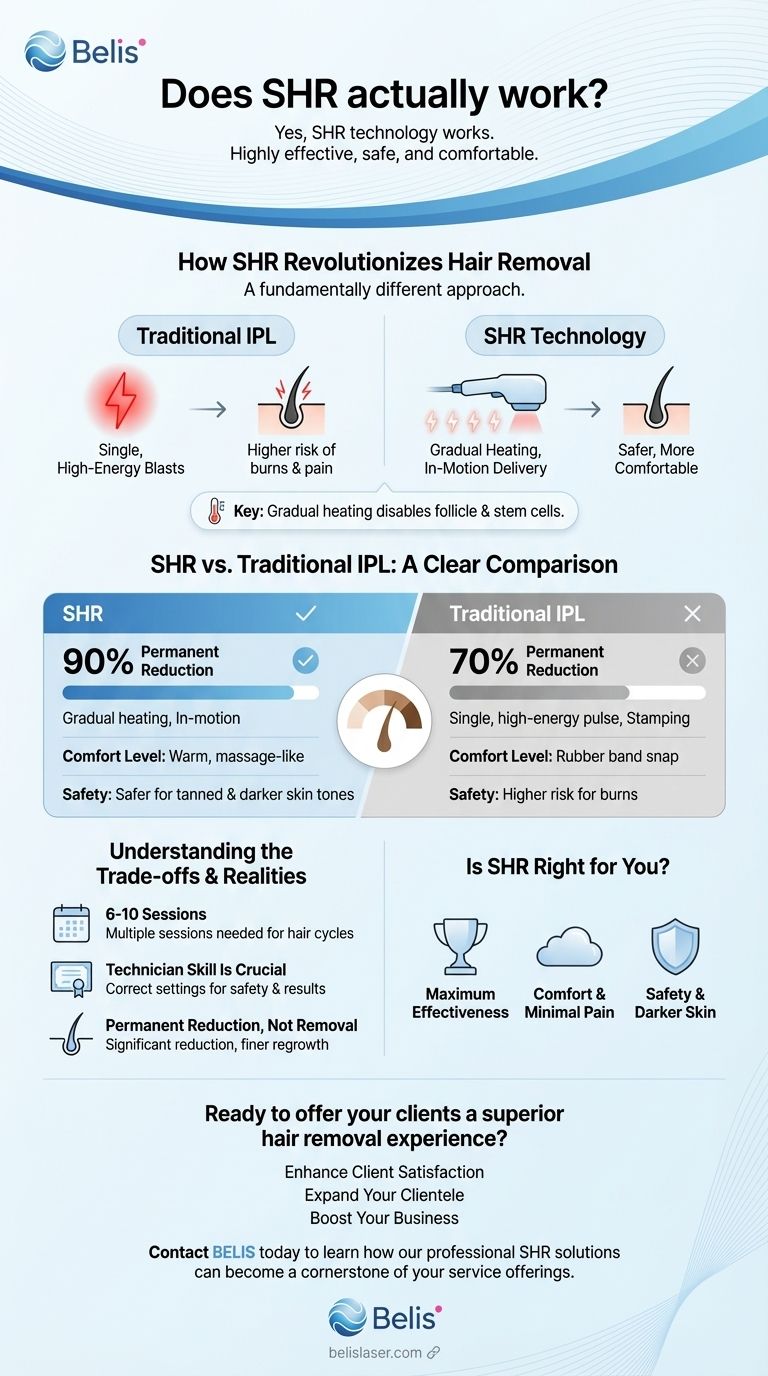
Related Products
- Diode Laser SHR Trilaser Hair Removal Machine for Clinic Use
- Clinic Use IPL and SHR Hair Removal Machine with Nd Yag Laser Tattoo Removal
- IPL SHR+Radio frecuency machine
- IPL SHR Hair Removal Machine for Permanent Hair Removal
- Clinic Diode Laser Hair Removal Machine with SHR and Trilaser Technology
People Also Ask
- What are the disadvantages of diode laser hair removal? Key Limitations & Safety Risks Explained
- How does diode laser hair removal work? The Science of Targeting Hair Follicles
- Does diode laser remove hair permanently? Understanding Permanent Hair Reduction
- Which is better, an IPL or a diode laser? Unlock Precision for Permanent Hair Reduction
- Can diode laser permanently remove hair? Achieve Lasting Hair Reduction with Professional Treatment



